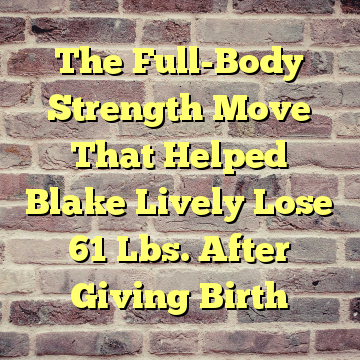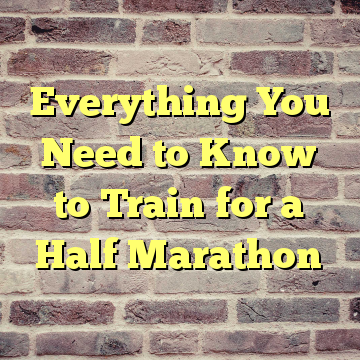Though he’s now a pro trail runner—a two-time national champion, in fact—David Roche didn’t naturally love the sport. “I will always remember my first run when I went out the door, got 200 yards, and had to stop because I was so winded,” he says. “I was sore for three days afterward.”
The more he ran, the easier—and more fun—it felt. Eventually, he quit his job as an attorney to run, coach a team called Some Work, All Play, and write a forthcoming book (with his co-coach and wife Megan) called The Happy Runner Project.
“You don’t have to run—but if you’re going to run, it should be joyful,” Roche says. And even if you don’t plan to leave corporate life for the trails, you can still reap running’s emotional and physical rewards, he believes. “Definitely, anyone can enjoy it, and anyone can improve by massive amounts.” Here’s how to do both.
Slow down
Most new runners start off at a sprint and quickly flame out, much the way Roche did. Now, he knows better. “If it hurts, you’re going too hard,” he says. Your body needs time to both develop aerobic fitness and adapt to the impact and repetitive motions running involves.
When you first start out, alternate easy running and walking—say, a minute of each. Each week, adjust your intervals (running more, walking less) until you’re steadily jogging. Even then, don’t judge yourself on pace; instead, run by effort, and keep things relaxed. “Listen to your body,” he says.
Then, pick up the pace
That said, steady slogging can quickly grow monotonous. Once you’ve logged a few continuous runs, try adding in bursts of speed—20 to 30 seconds of faster running followed by at least a minute of slower running. Or, find a hill and run up it quickly, then slowly jog back down. Start with two to four bursts or hills, then build up week by week. Besides making time pass more quickly, these short, hard efforts boost your heart rate and help reduce your injury risk.
RELATED: How to Start Running Without Getting Hurt, According to Pros
Turn on some tunes
Music can literally move you. In a small study in the Journal of Strength & Conditioning Research, runners clocked a speedier 5K with less effort when listening to either calm or upbeat melodies. Pro runner and coach Kaitlin Gregg Goodman (find her online at Running Joyfully) chooses different songs for different purposes: “relaxed if you’re trying to chill out on an easy day, a pump-up playlist for hard workouts,” she says.
Podcasts work too, and often come in workout-friendly 30- to 45-minute episodes (one of Roche’s favorites is NPR’s How I Built This). Note: If you’re running outside, consider using just one earbud to stay aware of your surroundings.
Grab a buddy
Running friends make the miles fly by, Roche says. And there’s no better way to multitask than catching up while you get your miles in. Can’t find a pal who’s game to stride with you? Search online or head to your local running store to seek out group runs; they often leave from stores, bars, and gyms. You might meet a brand-new friend who’s just your pace.
Focus your mind
Though training partners and music may serve as welcome distractions, actually tuning in to what you’re doing can also help you enjoy it more, notes Mackenzie L. Havey, a Minneapolis runner and coach and author of Mindful Running. “Research shows that mindful athletes tend to exhibit greater optimism, higher self-confidence, and less anxiety,” she says.
To start, spend the first few steps of your run doing a full scan of your body, mind, and the world around you, she recommends. Notice the feeling of your feet hitting the ground, the sound of birds chirping, the top three thoughts in your head. If you notice your mind wander—and you will—gently bring it back to the present moment. “You’ll find that fully immersing yourself in the run by focusing on your environment, body, and mind boosts enjoyment, even on the days you’re feeling less than inspired to work out,” she says.
RELATED: 5 Running Mistakes Beginners Always Make
Reframe your self-talk
Paying bills, feeding your kids, booking doctor’s visits—there’s plenty in life you have to do. Running, on the other hand, is a conscious choice you’re making to improve your health, fitness, and well-being. “I really like to say that it’s an opportunity, not an obligation,” Gregg Goodman says. Revel in the chance to test your limits, zap stress, and escape the day-to-day pressure of a busy life.
Bottle the beauty
When the going gets tough, focus on the splendor all around you. “It could be the way the leaves have fallen on the path or passing a child learning to ride a bike, or—my favorite—dog spotting,” says Chris Mosier, a four-time member of Team USA in duathlon and triathlon and a coach in Chicago. He always advises his athletes to keep an eye out for inspiring sights along their routes.
Extend those positive vibes by writing down the things you’re grateful for on the run (say, how fresh your legs felt or how fortunate you are to live near a running path) on slips of paper. Fold them up and put them in a used water bottle, Havey recommends. Pull them out when you’re lacking motivation—and over time, you’ll likely find yourself more tuned in to a sense of gratitude from the moment you lace up your running shoes.
RELATED: 11 Rules of Running Buddy Etiquette
Rethink your route
Gregg Goodman often notices runners retracing the exact same routes day in and day out. “I’ll put in their log: Your assignment for today is an exploration run,” she says. Bypassing your well-trod boulevard and seeking out a new sidewalk, path, or park adds an element of excitement to your routine. Another option is a destination run, a point-to-point course that ends up somewhere fun like a coffee shop or bookstore. Just take your phone and use a ride-sharing app to catch a lift home.
Time travel
On days when you can’t quite convince yourself that you like running, remind yourself of how good you’ll feel when you’re finished. “After the morning run, I’m going to be happier, I’ll be more productive, and my husband says I’m a better spouse,” Gregg Goodman says. “It’s like having coffee—we’re all much better people after coffee.”
To get our top stories delivered to your inbox, sign up for the Healthy Living newsletter
Make it meaningful
Give your running purpose by setting a specific target, like completing a 5K or improving upon last year’s time. Reflecting on how much that goal means to you can help you appreciate every step in the process, Gregg Goodman says.
You can also dedicate your miles to a loved one who can no longer run, raise money for a charity, or pace a friend in an event that’s meaningful to him or her. “Sometimes running can feel like a pretty selfish endeavor,” Gregg Goodman says. “Making it bigger than yourself can bring that joy back.”









